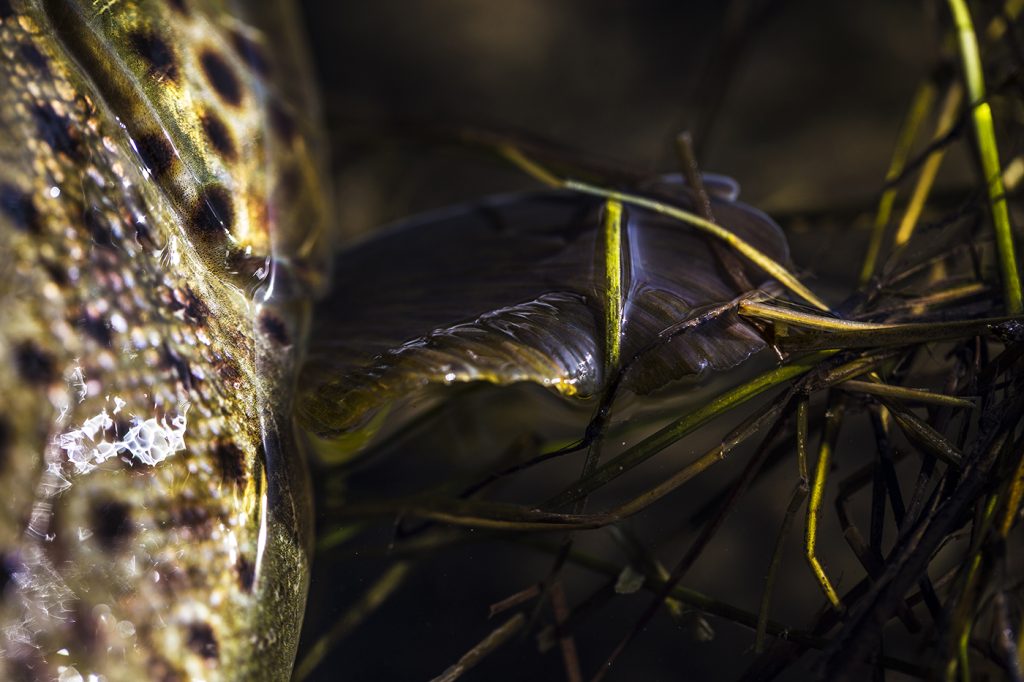
Photo: Matt Guymon / Freestone River Photography.
When you’re fishing deep the risk of losing a fly is always greater than when fishing closer to the surface or dry. If you’re fishing really deep you must expect to lose a handful or two of flies on a long fishing day. With that in mind – keep the flies simple and maybe even tied from cheap easily available materials.
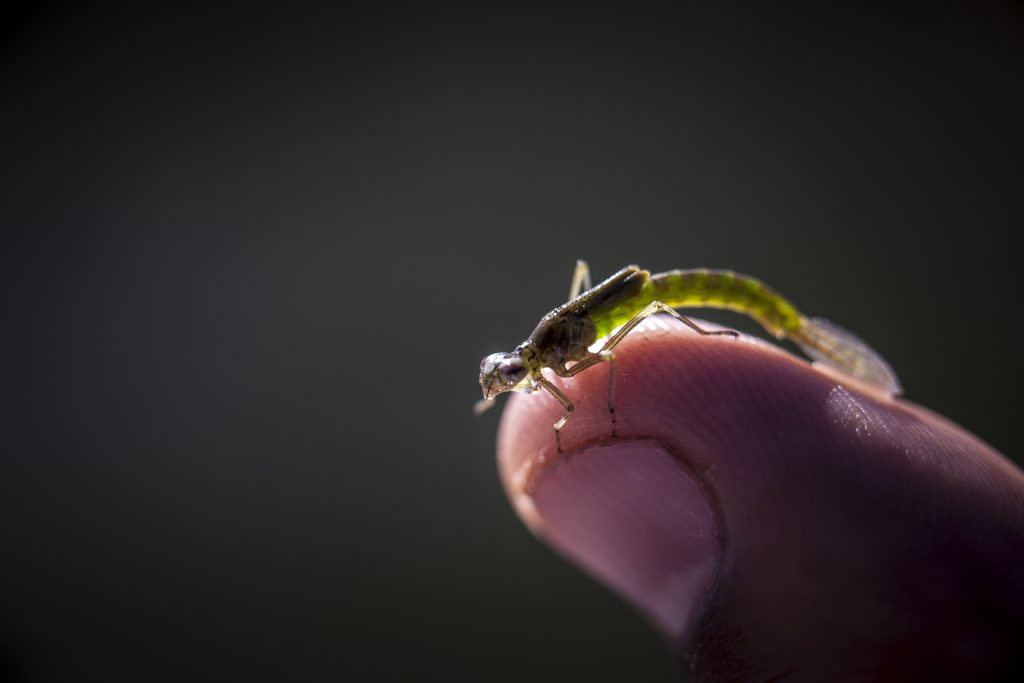
Damselnymph. Photo: Matt Guymon / Freestone River Photography.
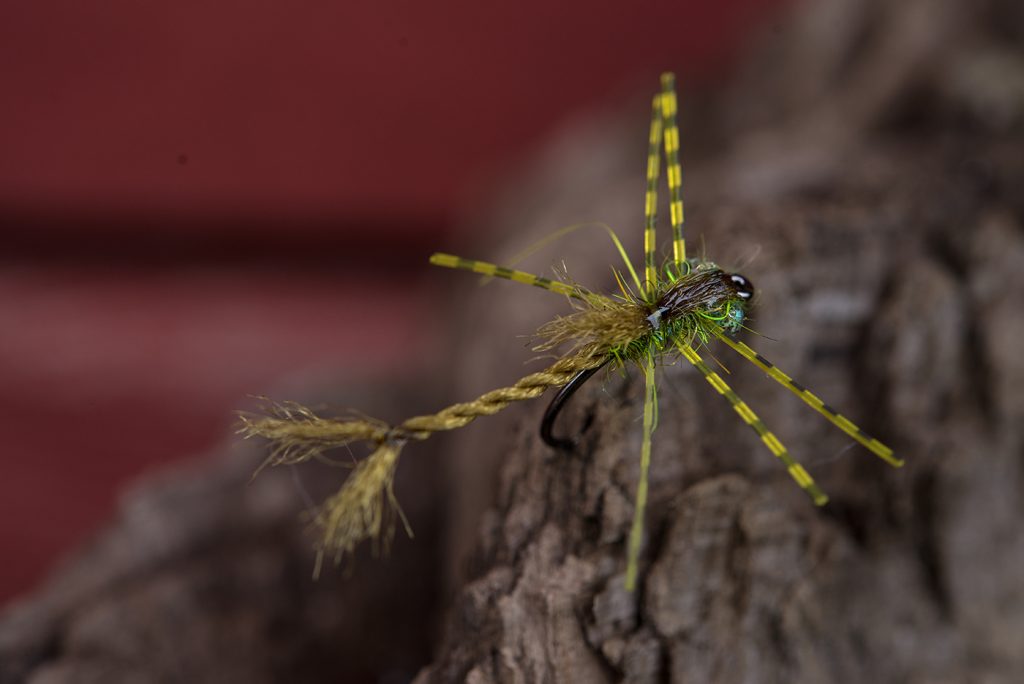
Matching the hatch – fly tied by Lars Chr. Bentsen.
I enjoy tying complicated pattern where most recognise the exact insect the fly is supposed to imitate. A good example is Oliver Edwards’ Baetis Nymph. Why? I like the challenge a complicated pattern and a no. 16 hook offers. Is it necessary – hardly – at best. And they are annoying to lose to a snag, since they’re not exactly fast and easy to tie.
So if you’re in a hurry, stick to something simpler and faster and rest assured, 2-3-4 feet below the surface the exact pattern won’t matter. Size matters, profile matters, colour matters – in that order. As always presentation is key. A good example is the Simple Yarn Nymph I like tying and fishing. In different sizes and colours, this pattern is enough to imitate anything.

Another good example is Håkan Karsnäser’s Shane Nymph. It’s fast and easy, yet contains all the elements of the living insect. Tail, abdomen, thorax, wing case and legs – even a head. Follow along here, where Håkan shows, step by step, how he ties this simple nymph. Once you have a tied a few, you’ll get the right proportions under your fingers, so you can fill the box with the sizes and colours you need.
Hook: Ahrex 560/56 1, size 12-20.
Thread: Tan.
Tail: Fibres from a light tan hen hackle.
Rib: Copper wire.
Abdomen: Olive squirrel dubbing.
Wing case: Fibres from dyed black turkey tail.
Thorax: Grey, natural squirrel dubbing.
Hackle: Light tan hen hackle.
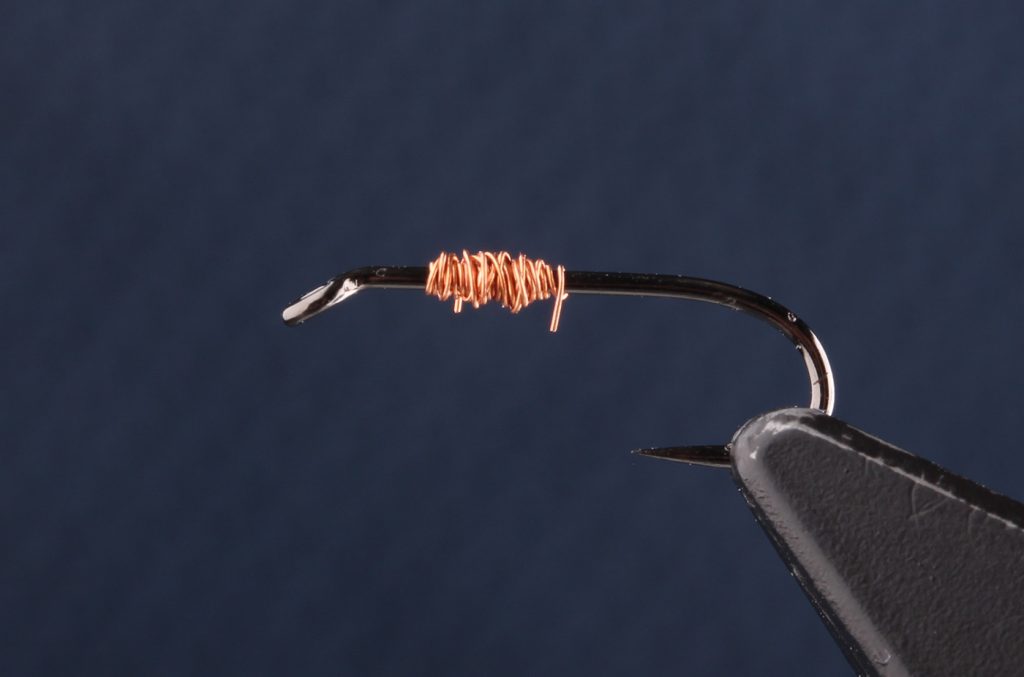
Place the hook in your vice and add weight – here copper wire.
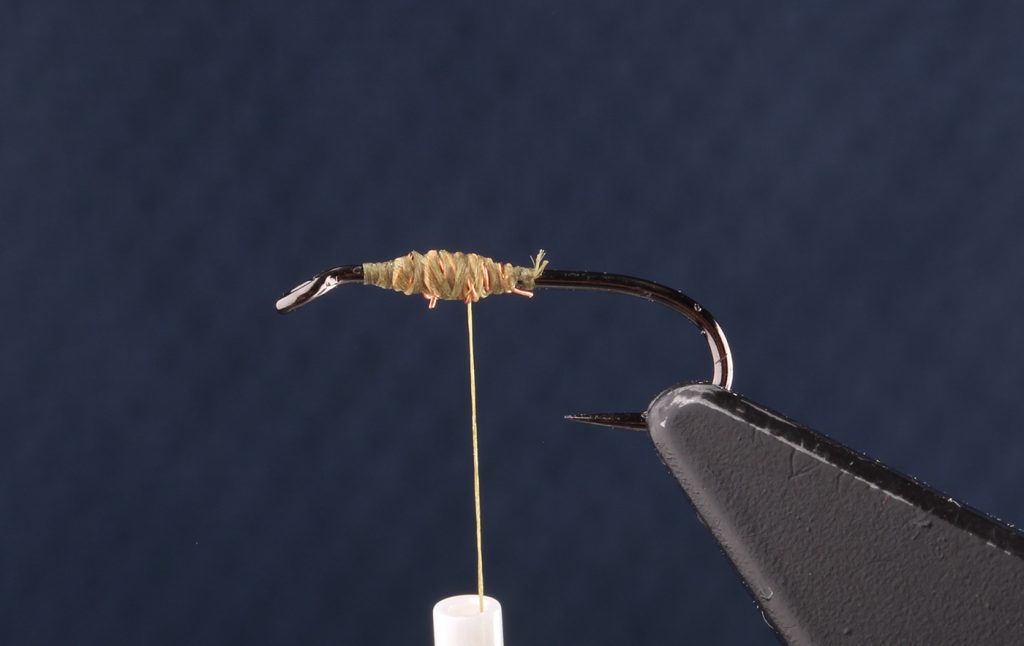
Attach the thread and secure the copper wire by covering it in thread.
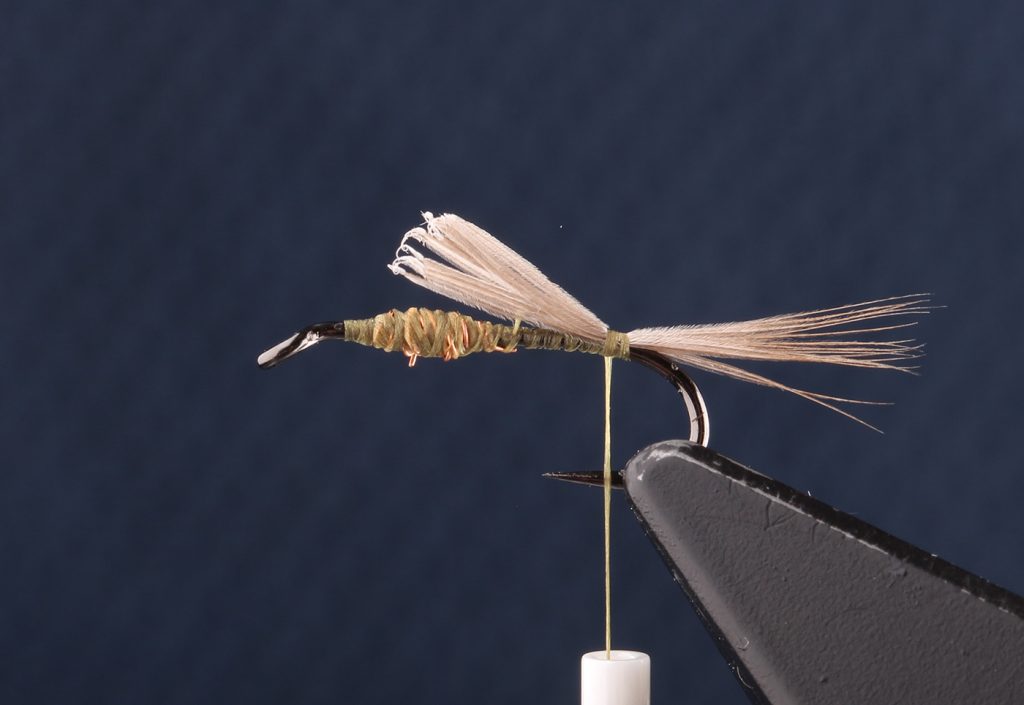
Bring the thread to the hook bend and tie in a small bunch of hen hackle fibres.

Tie in the copper wire for the rib.
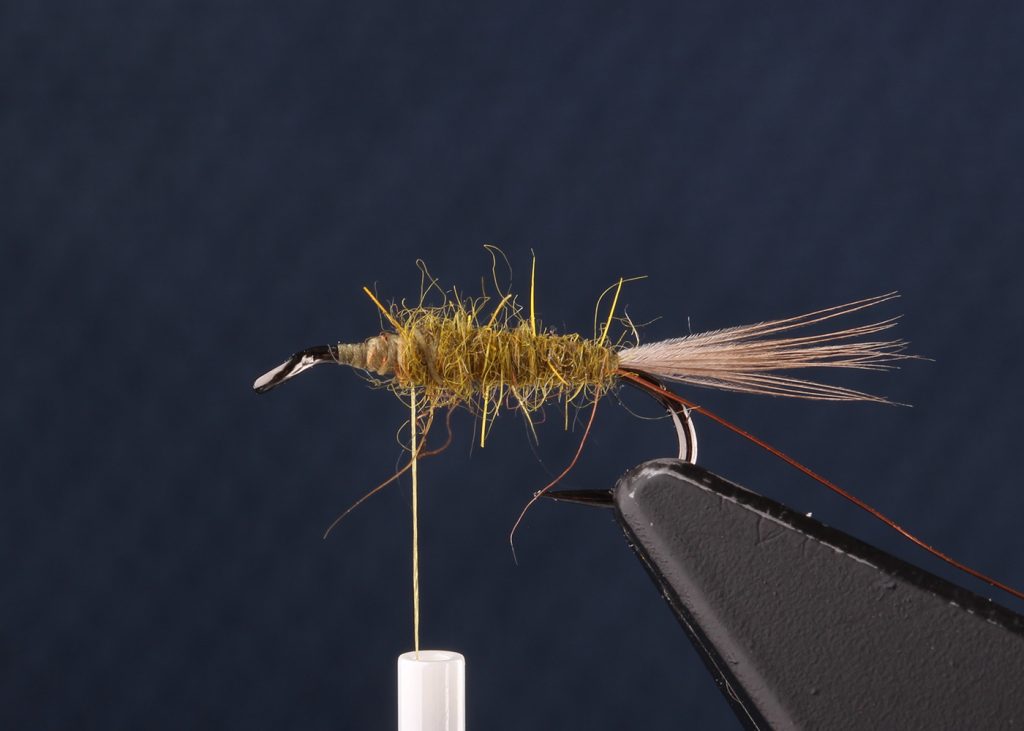
Dub the abdomen – you can make it as full or sparse as you like.
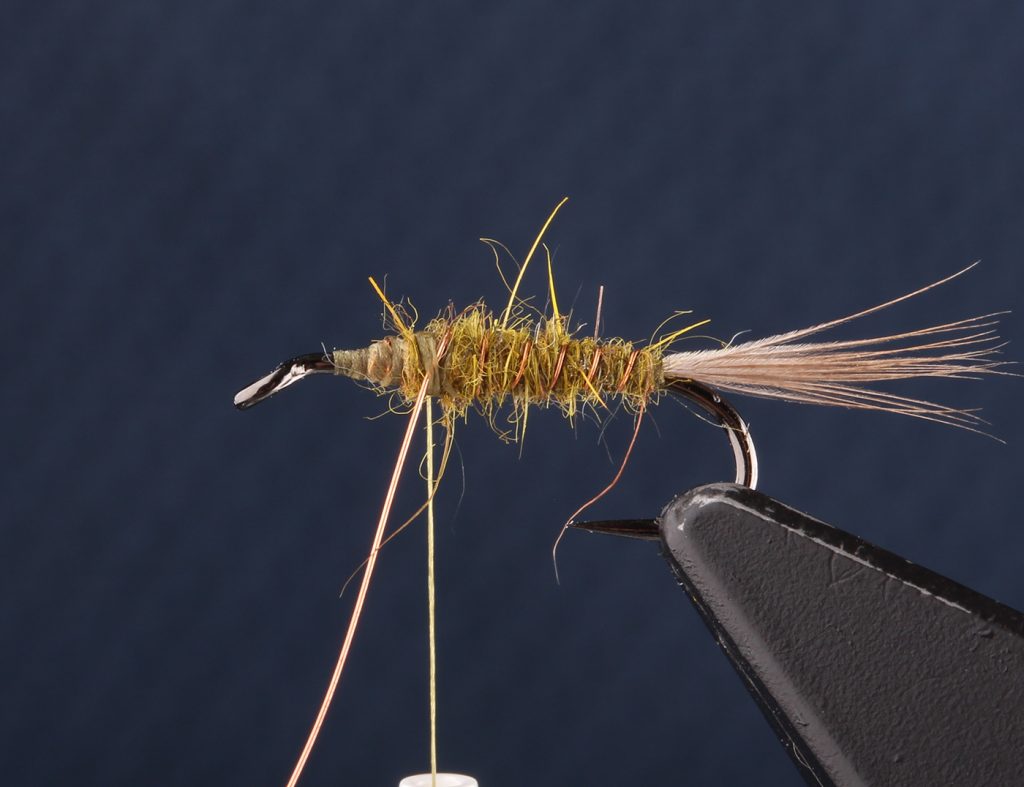
Wing the rib forwards over the abdomen in the opposite direction to the tying thread. This ensures more durability.
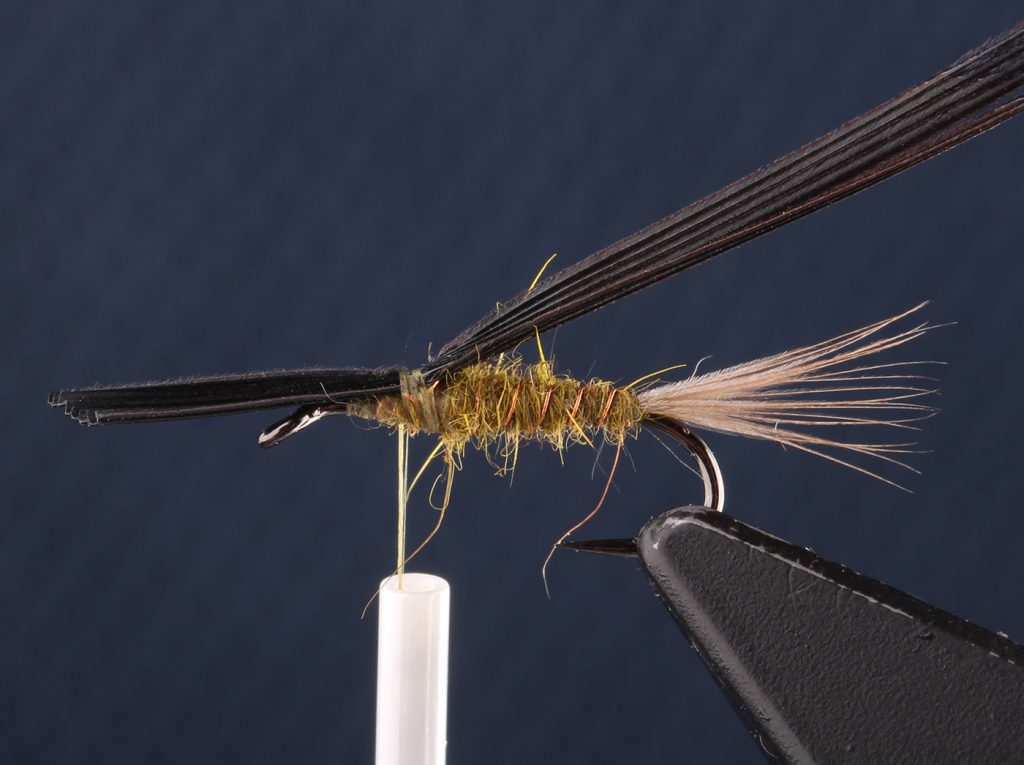
Tie in the turkey for the wing case, right where the abdomen finishes.
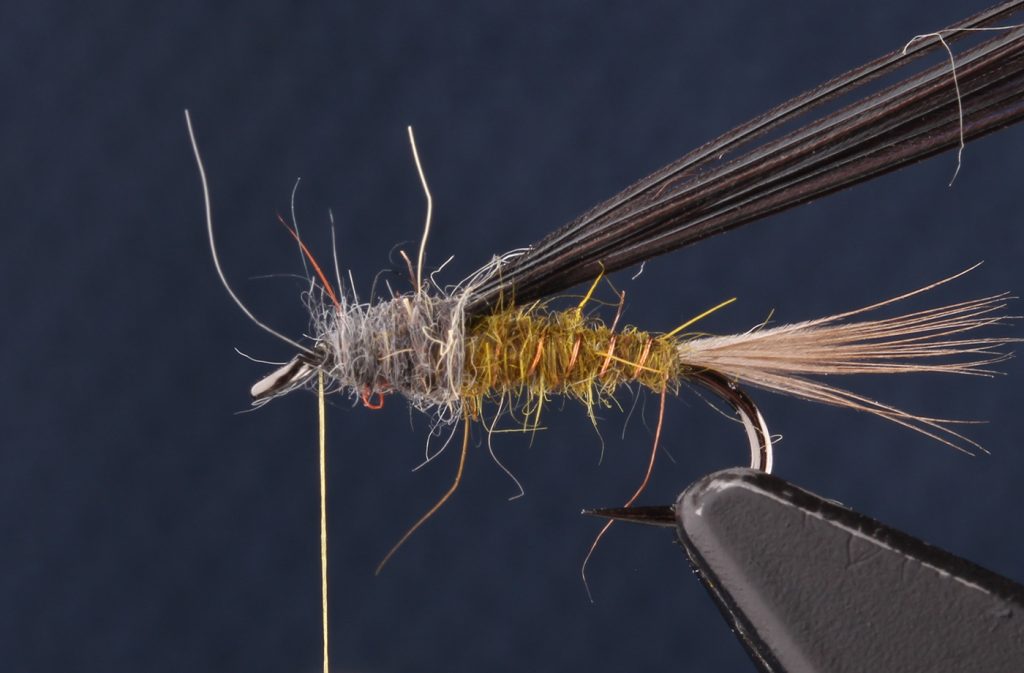
Dub the thorax and finish a millimenter or so behind the hook eye.
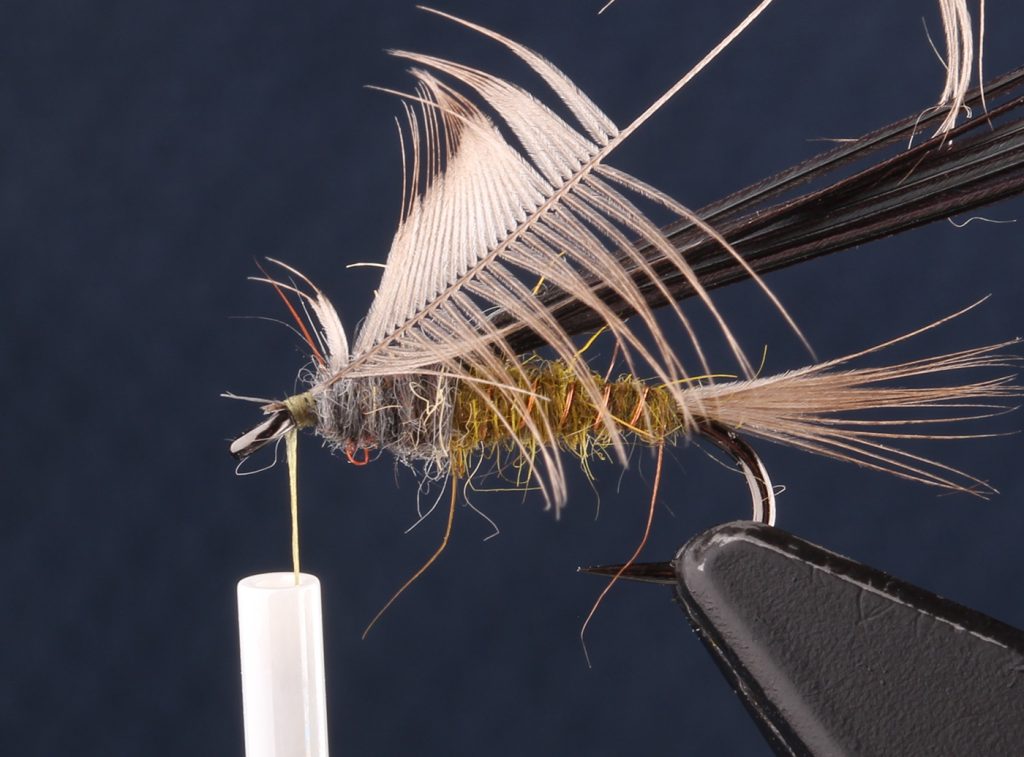
Tie in a hen hackle by the tip.
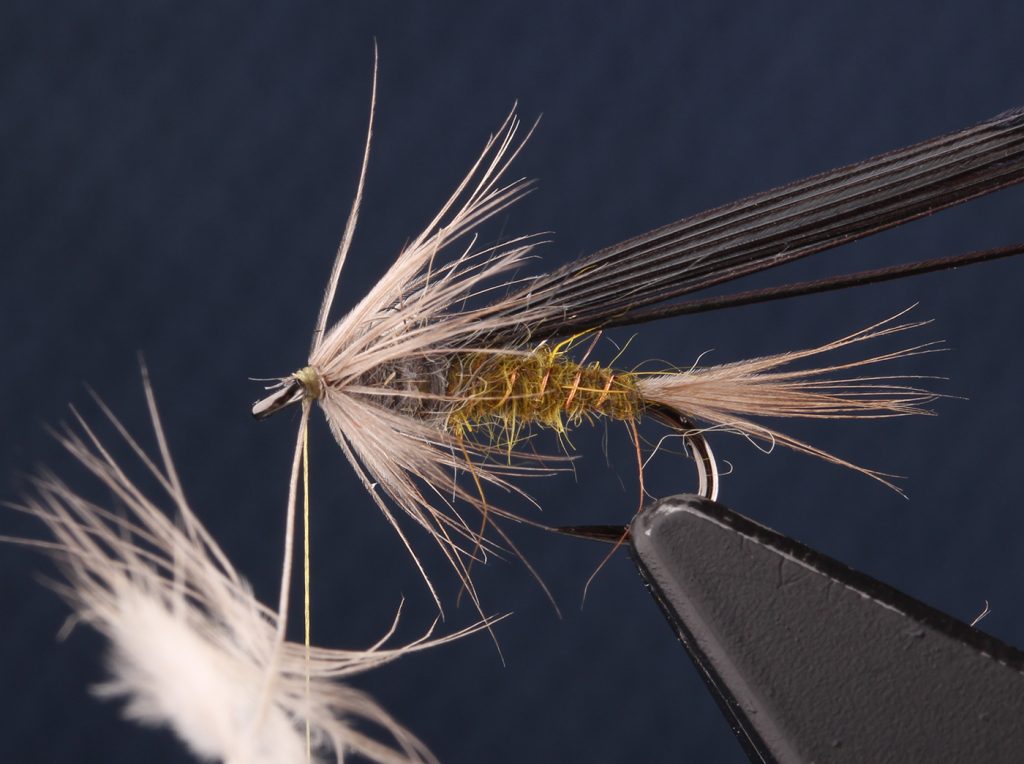
Wind the hackle as full or dense as you please. Take note of the next step.
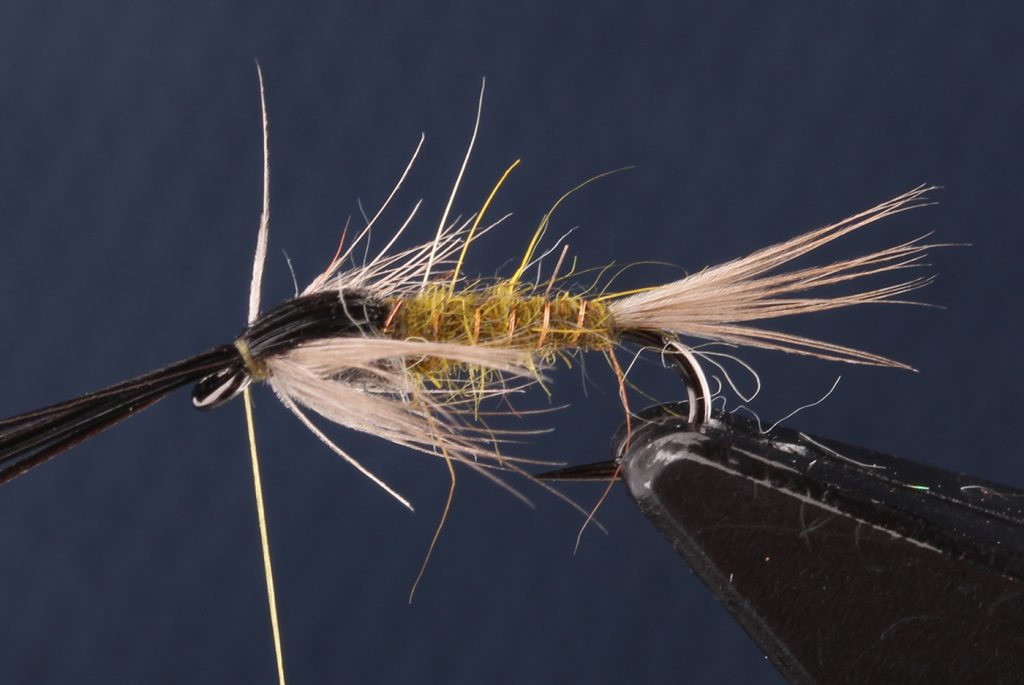
Part the hackle in the middel and bring over and tie down the fibres for the wingcase. This gives a few more fibres of hacke in the sides of the fly, so take that into account in step 10.
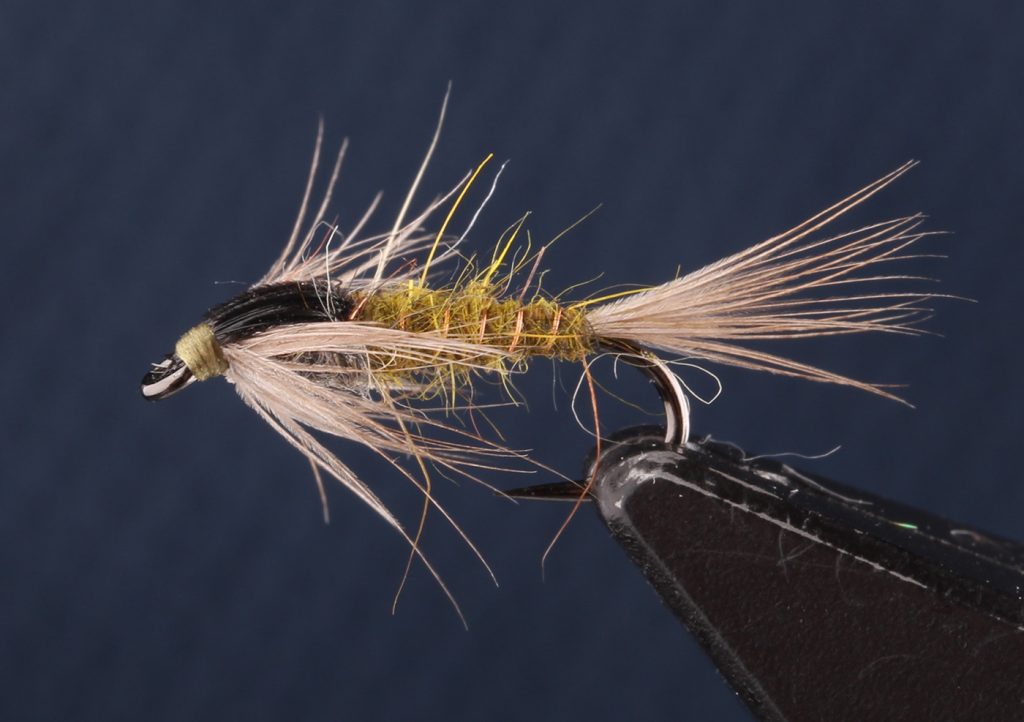
Cut the turkey fibres and finish with a neat head.
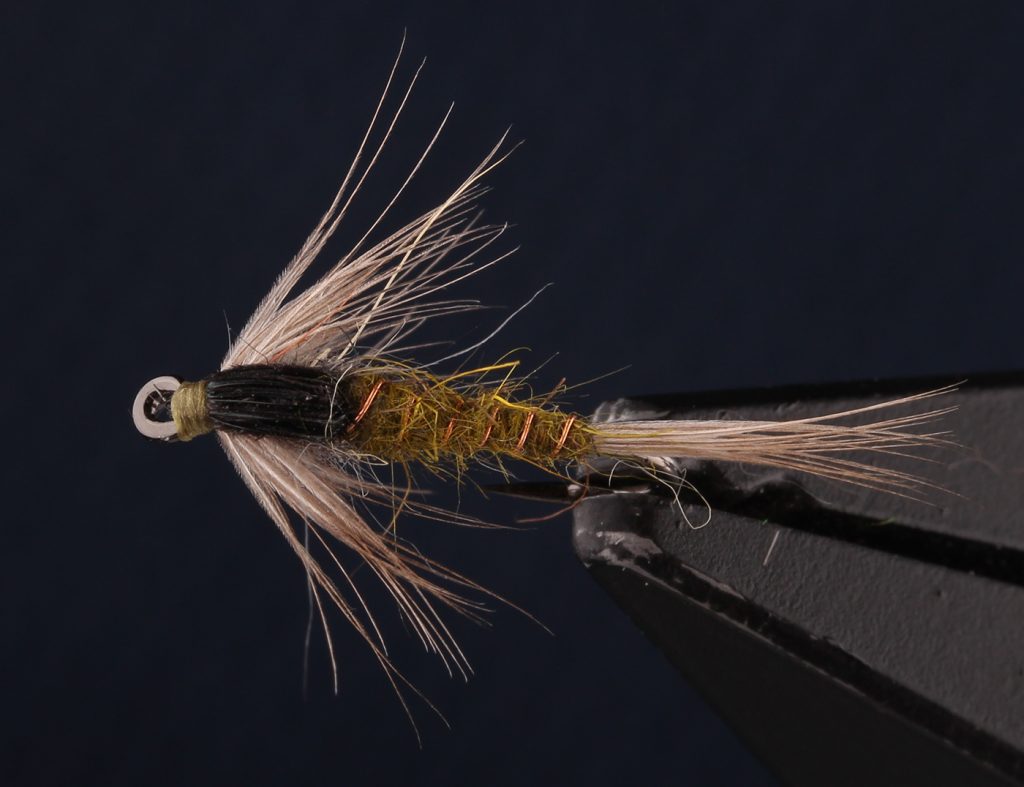
A good, distinct profile.
In our dry fly and wet fly playlist on YouTube there’s plenty of inspiration for other types of nymphs. Mayfly nymphs, damsel nymphs, gammarus, caddis larvae, jig nymphs and probably even more that I’ve forgotten. As usual by several different fly tiers.
Simple Yarn Nymph – tied by Lars Chr. Bentsen
Trout season is closing in fast on the Mother’s Hemisphere, so it’s time to fill the boxes and get ready.
